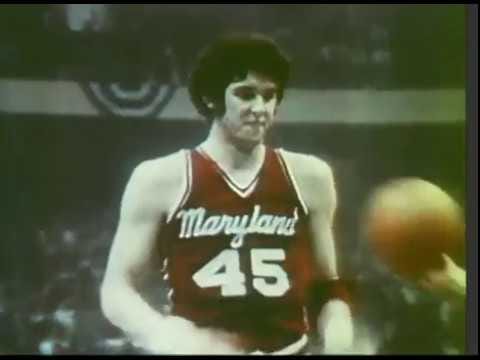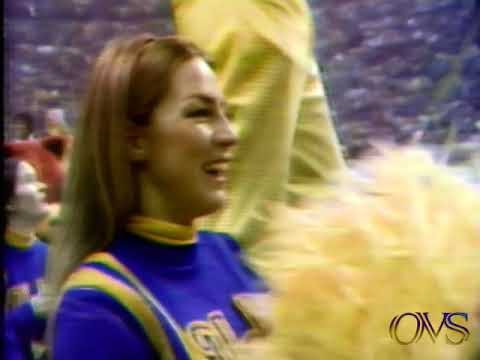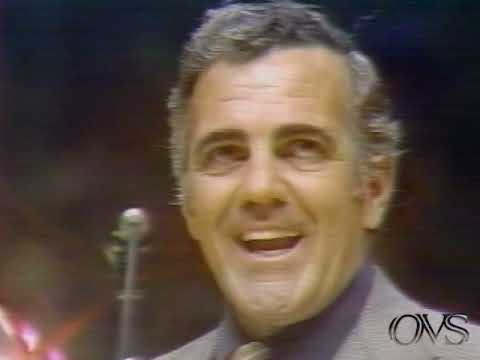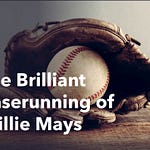AMERICA - March 18, 1964 and March 18, 1974
This week I’m learning virtual time travelers can have double the fun.
Thanks for reading The Sports Time Traveler™! Subscribe for free to receive new posts and support my work.
Subscribed
You can follow two NCAA tournaments instead of just one.
That’s exactly what I’m doing this week as there is just too much excitement going on in 1964 and 1974 to stay in just one era.
1964
We’ll start with 1964. The NCAA tournament is very different here 60 years ago than the commercial spectacle we’re familiar with in 2024.
There are only 25 teams invited to play in 1964. 15 of them gain automatic berths from winning their conference championships. And since most conferences don’t have their own tournament, several schools wrapped up their regular season conference titles weeks prior to the start of the NCAA.
This was the case for Temple which clinched the Middle Atlantic Conference title back on February 16th earning themselves a guaranteed spot in the 1st round of the NCAA East Regional 3 weeks prior to the start of tournament play.
10 schools, that did not hail from conferences, earned their spot in the NCAA Tournament via at-large bids. Bids were all handed out on February 17th.
DePaul was one of the 10 at large invites. Despite being the #9 ranked team in the country in the final AP poll, the Blue Demons spurned the NCAA to accept the top seed in the NIT tournament.
This is a key difference between the college basketball landscape in 1964 and 2024. The NCAA had competition, as the NIT tournament title, and the lure of all the games being played in Madison Square Garden in New York City, was enough to snatch a top 10 team away from the big dance.
A key factor in the DePaul decision was that their 1st NIT game would be 5 days later than the NCAA 1st round game, and that would give DePaul’s star player, Emmette Bryant, more time to recover from the ankle injury that has kept him out of play since mid-season.
In the February 18th Chicago Tribune, DePaul coach Ray Meyer explained the decision, “The tournament in New York will give us a better chance to get Emmette Bryant in shape.”
NOTE From The Sports Time Traveler™
I interrupt this article to introduce readers to Emmette Bryant. Most of you in 2024 probably never heard this name. A 6’1'“ guard, Bryant blossomed into a sensational college basketball player in his senior season at DePaul in 1964. He was averaging 18 points and 9 rebounds and an untold amount of assists (stats for assists were not kept in 1964).
Then he went down in January, with an injury that was initially feared to be a college career ending broken ankle. But it turned out to be only a severe sprain, and he was back just in time for the NIT Tournament in New York.
In their opening game of the tournament against NYU, Bryant was still not at full speed, and scored only 7 points. Yet DePaul led 43 - 37 at halftime. But after Bryant fouled out with 6 minutes to play, the UPI reported, “DePaul fell apart.” They also could not contain NYU’s center Happy Hairston, who scored 28 points and had 19 rebounds and led NYU to an upset victory.
And so Emmette Bryant’s college career ended.
Bryant had impressed the NBA enough however to become a 1st round selection in the 1964 NBA draft by the New York Knicks. He later found his way, via a fortuitous trade to the Boston Celtics where he was thrust into a key role in the 1969 NBA championship. More on that to come in about 5 years when we reach precisely 60 years since that remarkable final NBA Finals clash between Russell & Chamberlain.
Now back to 1964.
All of the top 8 teams in the final AP poll were in the NCAA tournament. But only 5 of them received one of the 7 1st round byes.
One of those not receiving a bye was a Final Four team from 1963. On March 10th, #6 ranked Oregon State, with a 25 - 3 record, led Seattle by 10 points at 55 - 45 in their opening game with 5 minutes remaining. And Seattle’s two tallest players had already fouled out. Oregon State was on their way to coach Slats Gill’s 600th victory in his 36 year career, a long journey that would end whenever this NCAA tournament concluded for the Beavers.
And then the unthinkable happened.
Oregon State’s 2 starting guards both drew their 5th fouls. Seattle then went to a full court press. And it worked. The Chieftains scored 16 of the game’s final 18 points to pull off a shocking upset 61 - 57.
They’re already calling it the Miracle of McArthur Court.
Coach Gill told the Capital Journal in Salem Oregon, “I feel sorry for everyone who wanted us to do well. As a coach I’ve gone through all the thrills that go with victory and success, but it would be silly for a coach to think he wouldn’t have to experience all the pain and heartache of nights like this.”
And so coach Slats Gill, who had been at the helm at OSU since 1928, ended his career with 599 victories, a .603 winning percentage, but never bagging a national title.
The loss also marked the final collegiate game of Mel Counts. The Beaver’s center had scored 27 points and grabbed 19 rebounds in the game, both totals near his season average, but it wasn’t enough.
Another top 8 team that had to play in the 1st round was #8 ranked Loyola of Chicago. Loyola had made their debut in the NCAA tournament in 1963 and shocked the hoops world when they made it all the way to the final and stunned Cincinnati, a team that had been ranked #1 in every week of the season in 1963. Loyola won their opening game of the 1964 tournament on March 10th by piling up 101 points on Murray State.
The other top 8 team that had to play in the 1st round was Villanova. The #7 ranked team easily beat Providence 77 - 66 on March 9th to gain a berth against #3 Duke in the quarterfinals.
Duke, a final four team from the prior year, was led by Jeff Mullins, a 6’4” senior guard. In the quarterfinal game on March 13th he had the night of his life. He scored 28 points in the 1st half, on 12 for 15 shooting, as the Blue Devils raced to a 49 - 33 halftime lead. Mullins finished with 43 points, shooting 19 for 28 from the field, to net almost half of Duke’s points in the 87 - 73 victory. Duke coach Vic Bubas described Mullins performance in the Durham Morning Herald, “He was great, great, great, just like he has been all year.”
Jack Horner of the Durham Herald-Sun was ecstatic about Mullins game against Villanova, “It seemed he couldn’t miss. A master at the off-balance shot, the Duke team captain made some fantastic, leaping, twisting, turning, spinning field goal attempts… proof of Mullins’ deadly shooting eye was his field goal from mid-court as the halftime buzzer sounded.”
Mullins continued his hot shooting in the East Regional Final the next day on March 14th. He scored 23 in the decisive 1st half as Duke built an insurmountable 62 - 27 lead and coasted to a 101 - 54 thrashing of Connecticut. Mullins finished 14 for 23 for 30 points.
Duke was now in the Final Four for the 2nd straight season.
In the west, a Cinderella team was making waves. UCLA, ranked #1, romped through the regular season undefeated at 26 - 0. In doing so, they became the first college team since 1957 go undefeated in the regular season.
But they were now deep into uncharted territory. In 15 prior seasons under coach John Wooden they had made it past the quarterfinals of the tournament just once. In the prior 6 seasons they had finished the season unranked.
In the quarterfinal game on March 13th they played Seattle, the team that had beaten Oregon State. Seattle played a run and gun style game against the Bruins that UCLA had not seen before and the game was tight at 81 - 80 UCLA with 5 minutes to go. At that point super guard, Gail Goodrich made two key plays, a slick pass for a 3 point play, followed by a steal and layup that put UCLA ahead by 6.
Goodrich finished with 19 points and his running mate, Walt Hazzard shot 9 for 14 for 26 points and UCLA made it to the regional final for the first time with a 95 - 90 win.
In the West Regional Final on March 14th, UCLA faced the University of San Francisco. Although unranked, San Francisco had a 19 game winning streak coming into the contest. The Dons were also the last team to beat UCLA in the quarterfinals of the 1963 tournament. Led by sensational center, Ollie Johnson, San Francisco took a 13 point early lead at 20 - 7, the largest lead any team had on UCLA all season, and they still led at halftime 36 - 28.
The Dons continued to lead with 14 minutes to go in the game when Goodrich nailed a jump shot to finally wrest the lead for UCLA at 45 - 44. The game stayed close after that, and was in doubt until Goodrich sank both ends of a 1 and 1 with 29 seconds to go and UCLA survived 76 - 72. They were again led by Walt Hazzard who finished with 23, including 14 in the 2nd half, on 7 for 11 shooting, and Goodrich who had 11 points in the 2nd half after making just 1 field goal in the 1st half.
The Oakland Tribune attributed Hazzard’s 2nd half play as the key to the game, “Once again it was All-America Walt Hazzard who rallied UCLA. His consistent shooting and ball handling enabled UCLA to regain its stride.”
While the 6’1” junior guard, Gail Goodrich seemed to make the key plays in the 2 regional games, his running mate, 6’2” guard Walt Hazzard has been the team’s super star and received great praise from Los Angeles Times columnist Jim Murray in his piece on March 15th in which he declared Hazzard to be the best college basketball player in the nation.
Murray effused with praise for Walt Hazzard, “He is a master player. He runs the ship. And like an experienced skipper, he can tell by the feel of the helm in the first few minutes what the evening is going to call for. You can always tell when an opponent is going to be tough because Walt Hazzard starts shooting for the basket right away. Most nights he just passes off - with the wizardry of a guy in a checked vest dealing cards.”
In the Mideast Regional Final it was #2 ranked Michigan, which had earlier sent home Loyola in the quarterfinals, stamping their ticket to the Final Four in Kansas City by defeating Ohio 69 - 57.
In the Midwest, a Kansas team was guaranteed to round out the Final Four. Kansas State, an unranked team, knocked off #5 Wichita to earn their ticket home.
The Final Four will pit UCLA against Kansas State and Duke vs. Michigan on March 20th with the Final and the 3rd place consolation game taking place the next day.
I can’t wait.
Now a quick jump ahead to 1974.
1974
A basketball showdown has been in the makings for 12 months in college basketball here in 1974.
As reported previously in The Sports Time Traveler™, UCLA should have played N.C. State in the NCAA Title game last year as both teams went undefeated. But N.C. State was robbed of the opportunity to appear in the tournament due to a ban over a recruiting violation. See my story from last year:
Hungry Like a Wolf & Nowhere to Feed
·
MARCH 15, 2023
The 2 teams did meet in a dream, made for TV, matchup early this season, with the UCLA Bruins pounding the Wolfpack. See my article on that game here:
Big Red vs. The Skywalker
·
DECEMBER 17, 2023
But only an NCAA title will settle the score between these 2 great teams.
Before they could possibly meet, both teams still had to qualify for the NCAA tournament. Despite the fact that both teams were ranked in the top 3, along with Notre Dame, in every poll since the end of January, here in 1974, teams that play in a conference must win their conference championship to make the NCAA tournament. In addition, the best independent schools in the country are invited to play.
N.C. State Wolfpack
N.C. State had to win the highly competitive Atlantic Coast Conference title to earn a spot in the NCAA tournament. In the ACC final on March 9th they played Maryland. Coming into the game, N.C. State was ranked #1 with a 25 - 1 record, the only loss being the early season game against UCLA. Since then they had won 24 straight.
Maryland, which had been ranked as high as #2 early in the season, was ranked #4, with a record of 22 - 4. In the ACC semi-final game the Terrapins had torn apart #6 ranked North Carolina 105 - 85.
It was a showdown of epic proportions with legacies on the line.
Maryland was led by sophomore guard John Lucas (20 ppg / 6 agp), senior forward Tom McMillen (19 ppg / 10 rbg) and senior center Len Elmore (15 ppg / 15 rpg).
N.C. State however had 2 players that provided 2 of the toughest matchups in the country. David “Skywalker” Thompson (26 ppg / 7 rpg), was 6’ 4” with perhaps the highest vertical leap of any basketball player in history. Tom Burleson (18 ppg / 12 rbg), at 7’4” was the tallest center in the NCAA.
At the start of the game, Maryland was hot. They made 12 of their first 14 shots and took an early 25 - 12 lead.
At halftime the Terrapins still led by 5 and 55 - 50.
At the start of the 2nd half the Wolfpack made a charge and forged ahead 66 - 61.
But Maryland came right back. Behind several steals by John Lucas the Terrapins scored 14 of the next 18 points and pulled back into the lead at 75 - 70.
But the Wolfpack re-took the lead once more at 91 - 89.
Yet again, Maryland tied it at 97.
After a late steal, Maryland had the ball with 9 seconds to play and the game tied. John Lucas took a 30 foot shot at the buzzer, and missed, sending the game to overtime.
In overtime, Maryland struck first on a free throw to take a 98 - 97 lead. But a Burleson basket put the Wolfpack up 99 - 98 and they never lost the lead again, winning this thriller 103 - 100.
In losing, Maryland shot 47 for 77 (61%). Lucas had 18 points / 10 assists / 6 steals. All 5 Maryland starters had at least 7 field goals.
But Burleson was even better for N.C. State, shooting 18 for 25 (72%), including 11 for 15 in the 2nd half, for a game high 38 points along with a game high 13 rebounds. And David Thompson added 29.
“It was one of the greatest college games that has ever been played,” Wolfpack coach Norm Sloan told A.J. Carr of the Raleigh News and Observer.
Carr then explained, “One big reason the Pack won was because Tommy Burleson made it impossible for them to do anything else. The 7’-4” center played like a demi-god.”
“That’s the greatest game I’ve ever seen a big man play,” said Maryland coach Lefty Drisesell.
N.C. State had their berth in the NCAA tournament.
Maryland, one of the best teams in the country was going home. Art Chansky, sports editor of the Durham Herald- Sun, wrote, “The Maryland players cried openly.”
Maryland turned down an invitation to play in the NIT tournament in New York. Len Elmore said, “I’m tired of playing in runner up tournaments.”
And so ended the college careers of the Maryland frontcourt stars.
After narrowly escaping Maryland, N.C. State had to play #5 Providence in the NCAA quarterfinals on March 14th. Providence was no match as N.C. State won by 14. Then in the East Regional Final the Wolfpack were paired with #15 Pitt and had an even easier time winning by 28 to punch their ticket to the Final Four in Greensboro.
But there was a scare for N.C. State in the Regional Final. David Thompson suffered a head injury requiring 15 stitches. On March 18th it was reported that Thompson’s condition was satisfactory and he would be available to play in the national semi-final game on March 23rd.
UCLA Bruins
UCLA, despite being the 7-time defending champion of the NCAA tournament, first had to win the PAC-8 conference title just to qualify to play.
Unlike N.C. State, they didn’t have to play a national powerhouse.
On March 9th, UCLA played #15 USC for the PAC-8 championship on the home court of USC.
Gus Williams of USC scored the game’s 1st basket and the Trojan crowd cheered loudly. Williams told The Los Angeles Times, “I was impressed with the super crowd we had. Then everything went wrong.”
USC committed 9 turnovers in the first 9 minutes of the game.
When UCLA got the ball they hit most of their shots, nearly 60% in the 1st half.
And there was absolutely no stopping Bill Walton. He went for 20 points and 16 rebounds in the 1st half and UCLA opened up an incredible 47 - 13 halftime lead.
The game was a rout with UCLA winning 82 - 52. They were now in the NCAA tournament.
On March 14th they played their quarterfinal game against #20 Dayton. With 7 losses coming into the tournament and not a single victory over a ranked team all season, there was no reason for UCLA to fear Dayton.
The Dayton Daily News recognized that statistically, there appeared to be zero chance for their hometown team. Sportswriter Gary Nuhn wrote this on the morning of the game, “Dayton enters as a 20 point underdog to UCLA which is the oddsmakers way of saying the Flyers not only don’t belong here, but don’t belong within a thousand miles of Tucson.”
But then Nuhn, shared this bit of hope for his readers, “But UCLA, probably more than at anytime in the mystical 7 year streak, which has seen the Bruins win every national title, appears this year to be havable. Why not right now?”
Nuhn’s wishful assertion seemed fanciful as the game began.
For most of the first 20 minutes Dayton played to form against the Bruins, falling behind by 17 points at 47 - 30.
And then something strange happened. Dayton didn’t die off as the script called for them to do.
Instead, Dayton scored 6 of the last 7 points of the half, including a mid-court buzzer beater by Dayton guard Donald Smith, to pull within 12 at 48 - 36.
Then in the 2nd half, UCLA came out flat and Dayton went on a 32 - 19 run to take the lead at 68 - 67.
Now it was game on. And with the game tied at 80 with 35 seconds to go, Dayton got the ball and their coach, Don Donoher, called for them to hold it for the final shot. With 4 seconds remaining, Donald Smith took what the Times called, “a relatively easy 15 footer,” and missed it. It could have been the shot of the decade. Instead the miss sent the game to a most unlikely overtime.
The Bruins had just barely survived becoming the biggest upset victims in college basketball since Loyola beat Cincinnati to win the 1963 NCAA Championship.
But the game was still not over.
In OT, UCLA got in front 86 - 82, but then had a huge setback as star forward, Keith Wilkes, fouled out. with 2 minutes to play. A minute later UCLA’s other starting forward Dave Meyers also fouled out.
Dayton then came back, largely on the free throw shooting of Mike Sylvester, who had 8 points from the line in OT, and tied the game at 88 sending it into a 2nd OT.
The 2nd OT saw the score again tied at 98 with seconds left on the clock when Bill Walton, the college player of the year for the 3rd consecutive season, stole the ball, raced down court and missed a 25 footer at the buzzer.
The game headed to a 3rd overtime.
In the 3rd OT, “Walton was Superman again,” according to the Times and UCLA ran away with it 13 - 2 for a final score of 111 - 100. Sylvester had played the game of his life for Dayton with 36 points and 13 rebounds on 12 for 21 shooting from the field and 12 of 13 free throws.
UCLA had escaped again.
2 days later, on March 16th, their opponent in the West Regional Final was unranked San Francisco, just as it had been 10 years earlier in 1964.
Unlike 1964, the Dons were no match for UCLA. The Bruins crushed them 83 - 60.
UCLA had their spot in the Final Four.
Notre Dame Fighting Irish
One other team had a legitimate claim as a title contender.
Notre Dame, had taken down UCLA’s record 88 game winning streak in January. See my article on that game:
UCLA's 88 Game Winning Streak Is On the Line
·
JAN 24
On March 14th, the #3 Fighting Irish had a quarterfinal that they were expected to win over #12 Michigan.
But Campy Russell played the game of his life, scoring 36 points to lead Michigan to an upset 77 - 68 victory.
Notre Dame coach Digger Phelps told the Chicago Tribune, “Russell is a phenomenal player. When he has a hot hand there is no way to stop him. He’s definitely an All-American. A lot of these shots were from 25 to 28 feet.”
With Notre Dame out the 1974 Final Four consists of #1 N.C. State, #2 UCLA, #7 Marquette, and #14 Kansas.
Due to the quirkiness of NCAA pairings, N.C. State will meet UCLA in the semi-final game to be played on March 23rd.
I can’t wait!















Share this post